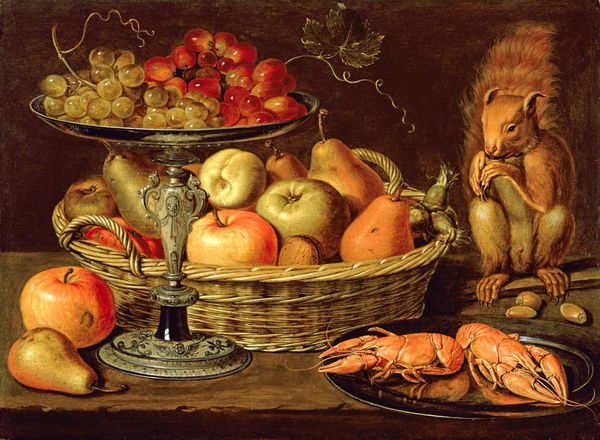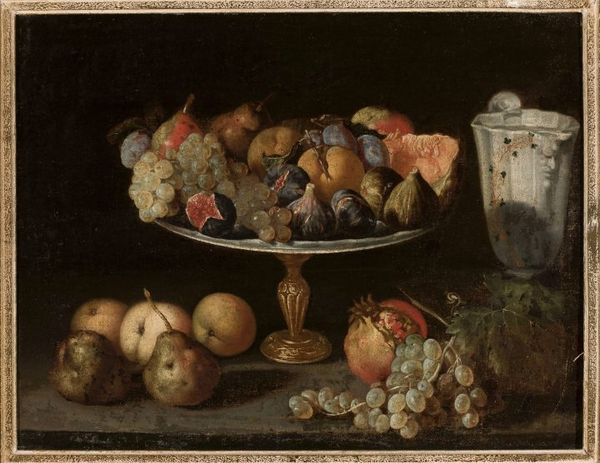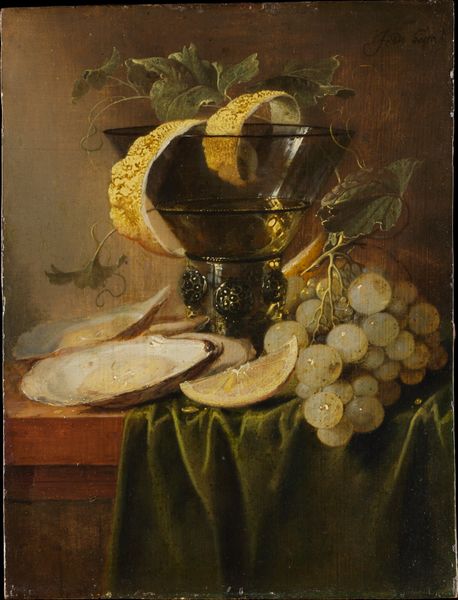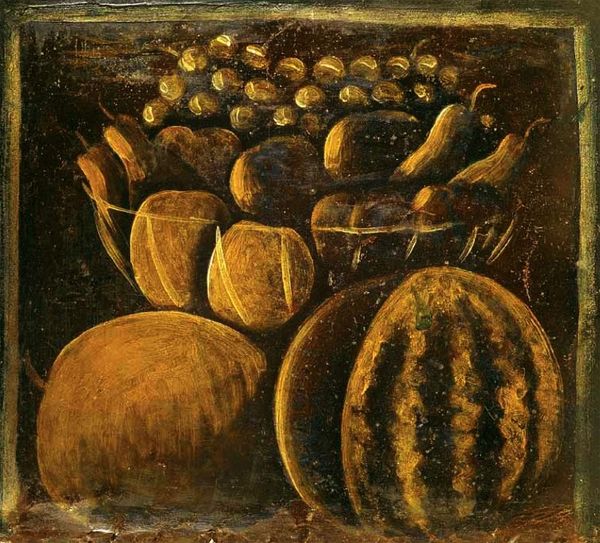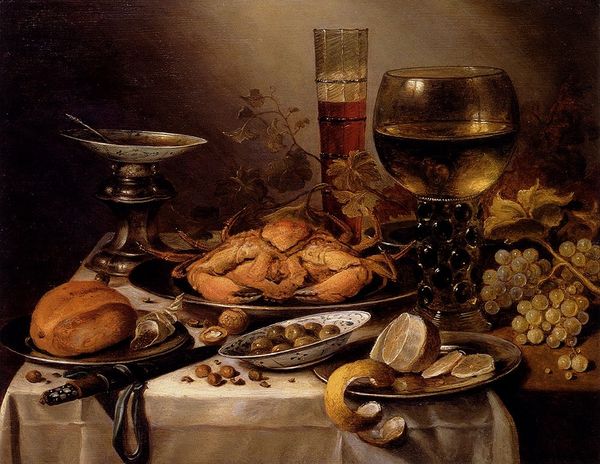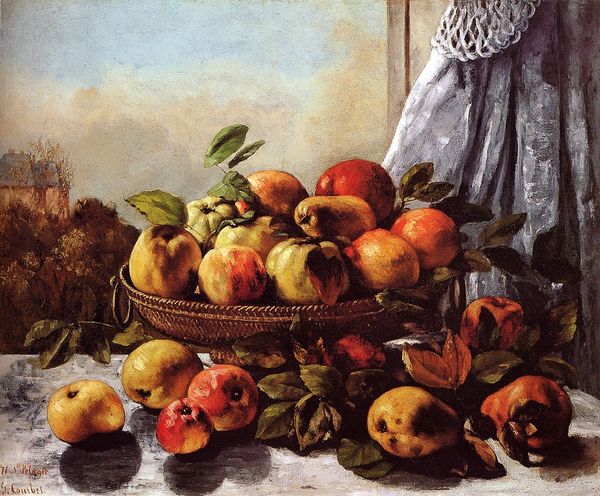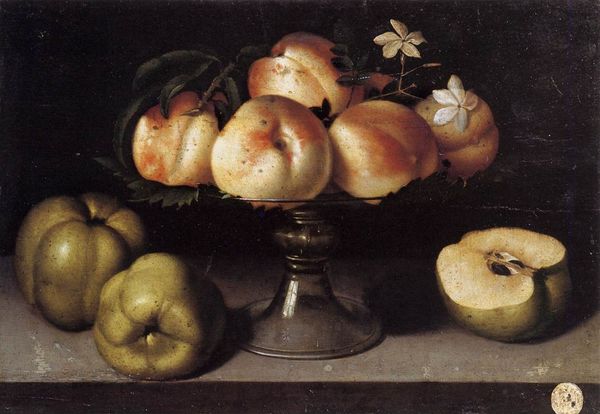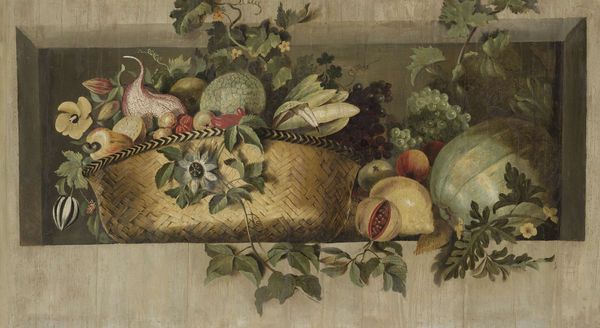
tempera, oil-paint
#
still-life
#
food
#
baroque
#
tempera
#
oil-paint
#
oil painting
#
studio composition
#
genre-painting
Copyright: Public domain
Josefa de Óbidos painted this still life featuring an ornate bowl overflowing with pastries, all set against a dark, neutral background. The arrangement might seem simple, but it invites us to explore the historical and cultural significance of its symbols. The sweets, rendered with such detail, go beyond mere culinary depiction; they evoke the vanitas tradition, reminding us of life’s transience. This tradition finds its roots in medieval morality plays, where worldly pleasures were displayed only to be revealed as empty. Similarly, we see echoes of classical cornucopias—symbols of abundance and plenty—transformed here into a display of fleeting earthly delights. Consider the flowers, too, scattered around the sweets. Their presence is not merely decorative; they are potent symbols of nature’s cycle of bloom and decay, a silent reminder of mortality. Flowers, like the offerings to deities, often represent renewal and rebirth, reflecting our continuous confrontation with death. The dark background amplifies this emotional tension, intensifying the visual impact. The painting acts as a mirror to our innermost thoughts and fears regarding the ephemeral nature of life, engaging us on a subconscious level. It's a dance of joy and sorrow, abundance and decay, ever recurring throughout art history.
Comments
No comments
Be the first to comment and join the conversation on the ultimate creative platform.
